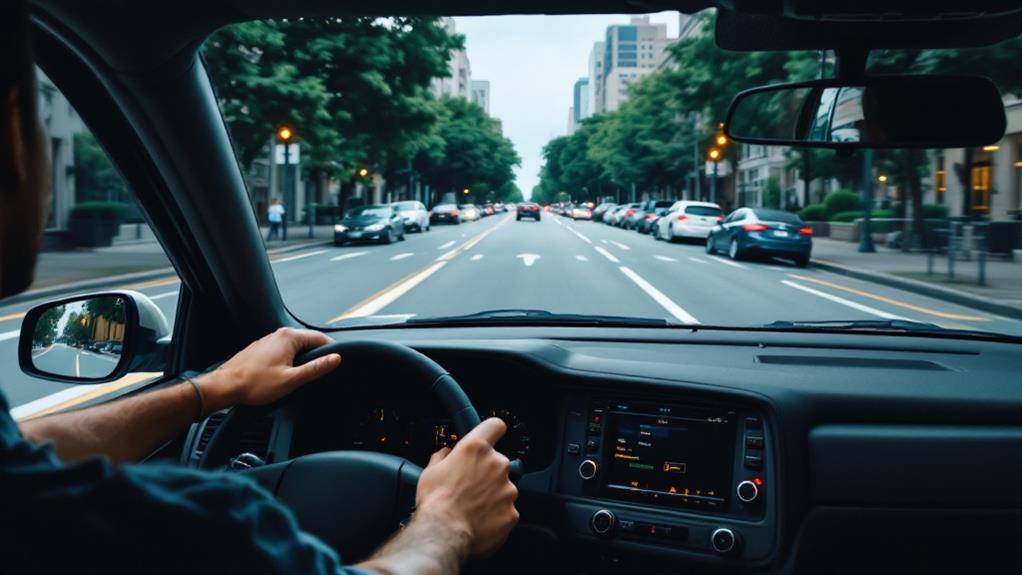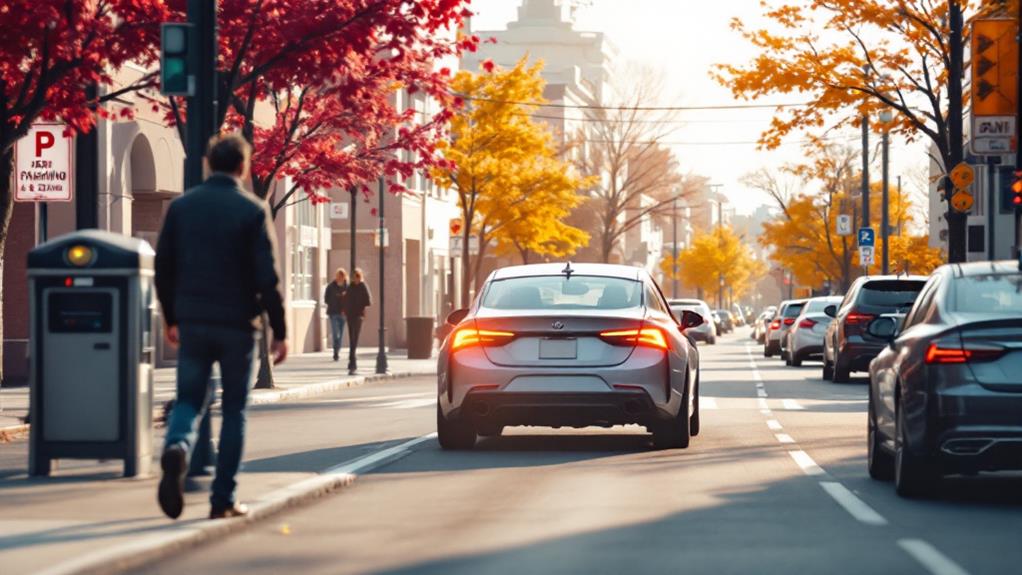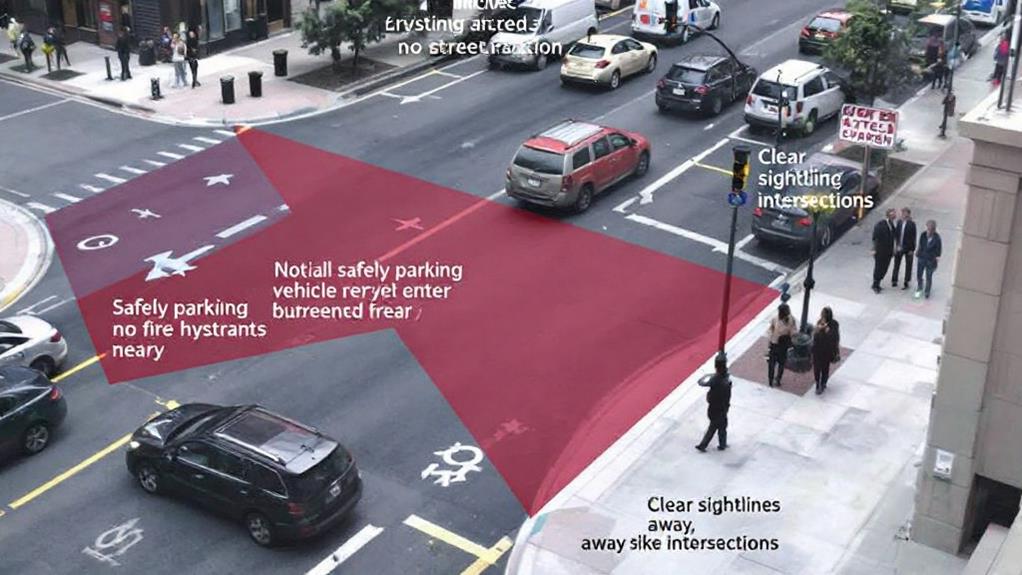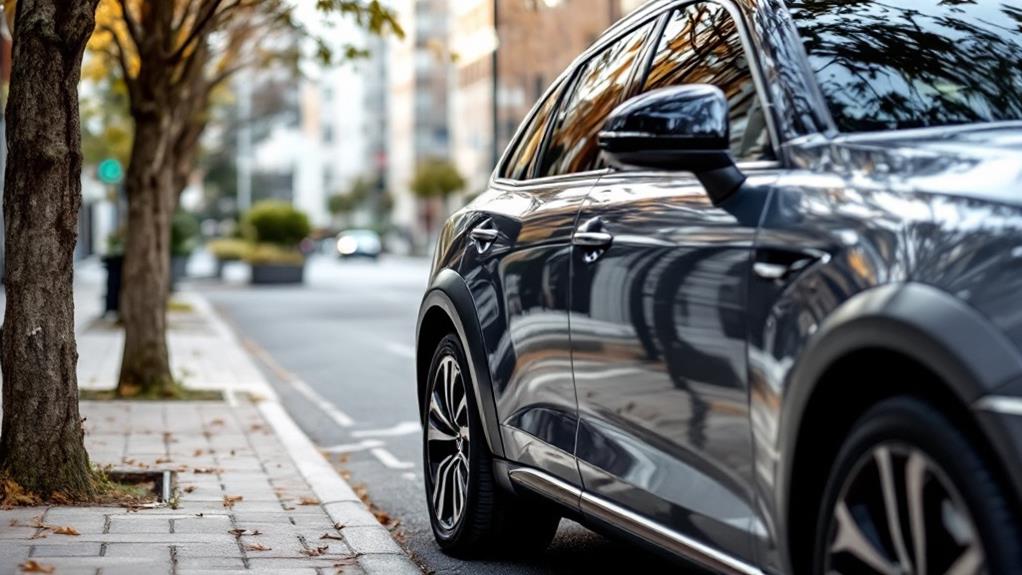How to Avoid Common Street Parking Mistakes

To avoid common street parking mistakes, become proficient in proper wheel rotation for uphill and downhill parking. Turn wheels away from the curb when parking uphill and towards it when parking downhill. In tight spaces, maximize your steering wheel rotation for better maneuvering. When parallel parking, approach slowly and turn the wheel fully when backing in. Traverse tight spots cautiously by positioning your car parallel to the vehicle in front and making small adjustments. Be familiar with local parking regulations, check mirrors and blind spots, and always engage your parking brake. By honing these skills, you'll become a confident and proficient street parker in no time.
Mastering Proper Wheel Rotation
When it comes to street parking, you might not think about your wheels, but correct wheel rotation is crucial. To park safely on streets with inclines, you'll need to become proficient with this technique. Always keep your wheels turned in the right direction to prevent your car from rolling away if the brakes fail.
When parking uphill with a curb, turn your wheels away from the curb. This way, if your car starts to roll, the front wheels will hit the curb, stopping the vehicle. For downhill parking with a curb, turn your wheels towards the curb. This guarantees that if your car moves, it'll roll into the curb rather than into traffic.
If there's no curb, turn your wheels towards the side of the road, regardless of whether you're facing uphill or downhill. This precaution will direct your car away from traffic if it starts to move. Remember to engage your parking brake and leave your car in gear (or "park" for automatic transmissions) for added security. By becoming proficient in proper wheel rotation, you'll considerably reduce the risk of your vehicle rolling away and causing damage or accidents.
Understanding Space Requirements
In and around tight parking spaces, maximizing your steering wheel rotation is indispensable. When you're trying to parallel park, fully rotating your steering wheel to its limit reduces the space you need to align your car with the curb. If you don't turn the wheel at least two full rotations, you'll likely end up with improper positioning, and your vehicle won't be parallel to the curb.
Remember, nearby parked cars restrict your maneuvering room, making it essential to use your steering wheel's full range of motion for optimal alignment. By turning the wheel four complete rotations instead of just 2.5, you can position your car parallel using half the space. This technique is especially important in crowded urban areas where parking space is at a premium.
As a beginner driver, you might be tempted to shy away from fully rotating the wheel. However, this practice is necessary for proper car positioning in limited spaces. By honing this skill, you'll be able to park confidently in tighter spots and avoid the frustration of having to readjust your vehicle multiple times. Always aim for maximum wheel rotation to ensure you're making the most of the available space.
Positioning for Parallel Parking

To successfully parallel park, you'll need to position your car correctly from the start. When approaching your chosen parking spot, it's vital to maximize your steering wheel rotation. Fully turning the wheel to its limit reduces the space needed to align your car with the curb, which is especially important in tight street parking situations.
As you maneuver into the spot, remember that proper positioning typically requires two full rotations of the steering wheel. This guarantees your car ends up parallel to the curb rather than facing straight ahead. Don't be tempted to cut corners by not turning the wheel completely – this common mistake can leave you poorly positioned and potentially blocking traffic.
To avoid common parallel parking errors:
- Approach the spot slowly and confidently
- Turn your wheel fully when backing into the space
- Straighten out with two complete wheel rotations
Navigating Tight Spots
Although tight parking spots can be intimidating, you'll find them much easier to maneuver with the right techniques. When faced with a narrow space, take a moment to assess the situation before attempting to park. Turn on your hazard lights to signal your intention and avoid parking too quickly.
Start by positioning your car parallel to the vehicle in front of the space, about two feet away from its side. Turn your steering wheel fully towards the curb and slowly back up until your rear wheel is in line with that car's rear bumper. Straighten your wheels and continue reversing until you're at a 45-degree angle to the curb. Then, turn your wheel sharply away from the curb and back up slowly, using your mirrors to gauge your position.
As you enter the space, make small adjustments to straighten out. Don't be afraid to pull forward and realign if needed. Remember, it's better to take your time than to rush and risk damaging your car or others. Parking in tight spots becomes easier with practice, so don't get discouraged if it takes a few attempts to perfect your technique.
Avoiding Common Beginner Mistakes

Parking pitfalls can trip up even the most well-intentioned drivers. As a beginner, you're more likely to make mistakes, but with awareness and practice, you can avoid common errors. Make sure you're familiar with local parking regulations and signs before attempting to park on the street. Stay alert for hidden fire hydrants, driveways, or other restricted areas that might not be immediately obvious.
When parking, follow these essential tips:
- Always check your mirrors and blind spots before opening your door to avoid hitting cyclists or pedestrians.
- Use your turn signal when pulling into or out of a spot to communicate your intentions to other drivers.
- Double-check that you've engaged the parking brake, especially on hills, to prevent your vehicle from rolling.
Pay attention to parking meter time limits and remember to feed the meter if necessary. Don't assume that an empty spot is always available for parking; look for signs indicating reserved spaces or temporary parking restrictions. By staying vigilant and following these guidelines, you'll become a more confident and responsible street parker in no time.
Perfecting Your Parking Technique
Practice makes perfect when it comes to street parking. To hone your skills, start in less crowded areas or empty parking lots where you can practice without the pressure of traffic. Focus on mastering parallel parking, as it's often the most challenging aspect of street parking.
Begin by positioning your car about two feet away from the vehicle in front of your desired spot. Turn your wheel sharply towards the curb and slowly back up until your rear wheel aligns with that car's rear bumper. Then, straighten your wheels and continue reversing until you're at a 45-degree angle to the curb. Next, turn your wheel in the opposite direction and gently back into the space.
As you improve, work on judging distances and spatial awareness. Use your mirrors effectively and learn to rely on them for precise maneuvering. Pay attention to your car's dimensions and practice gauging how much space you need. Gradually increase the difficulty by attempting tighter spots or busier streets.
Remember to always check your surroundings, use your turn signals, and be patient with yourself as you develop this skill. With consistent practice, you'll soon be confidently handling even the trickiest street parking situations.



